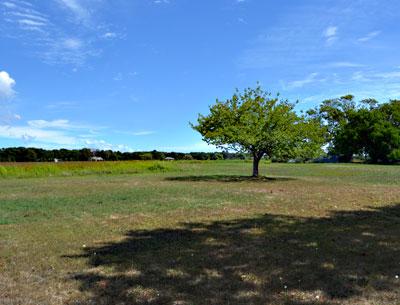Corps Beach Plan Advances
Corps Beach Plan Advances
The Army Corps of Engineers has issued its draft environmental assessment for the Montauk beach protection work it is proposing — a slightly larger and more expensive dune construction and beach-fill project than had originally been floated.
The project is a “temporary stabilization” effort, according to the Army Corps, until more extensive rebuilding begins under the Fire Island to Montauk Point “reformulation project,” an extensive shoreline reconstruction that has been in the works for decades and is nearing final federal approval.
In the meantime, the Army Corps would start in January to construct a 16- foot-tall dune along 3,100 feet of shoreline in downtown Montauk, largely in front of the oceanfront motels. The dune would extend from South Emery Street to the Atlantic Terrace motel.
Its core would contain approximately 14,000 geotextile bags filled with sand, each weighing about 1.7 tons. The work is expected to be complete by next May at a cost now estimated at $8.9 million, up from $7.5 million.
The project still falls short of what town officials had hoped would be created immediately, at full federal cost. However, in response to the town’s requests, the Army Corps has increased the proposed volume of sand to be used for the dune and beach fill from between 41,000 to 50,000 cubic yards to 71,000 cubic yards, Kim Shaw, the town’s natural resources director, said at a town board meeting on Tuesday.
Of that, 20,000 cubic yards of sand would be excavated from the project site; the rest would be trucked in.
According to the Army Corps, the interim project will not limit the longer-term beach reconstruction options and storm-protection solutions that could be undertaken later under the more far-reaching federal project, known as the FIMP reformulation study.
Town officials have been working since June to obtain the permission of property owners in the project area to complete surveys that will determine whether easements from those owners will be needed for the Army Corps to proceed. Town officials are hoping to schedule a visit here this month by representatives of the Army Corps and the state’s Department of Environmental Conservation, a partner on the Montauk project, to discuss its details at a public meeting.
Documents describing the project, including the Corps’ finding that it will have no significant environmental impact, can be found on the website for the U.S. Army Corps of Engineers New York Region, and will also be posted on the town’s website.
Public comments may be submitted on the environmental assessment until Sept. 25. They can be emailed to the project biologist at [email protected], or the project manager, at [email protected]. They may also be sent by mail to the U.S. Army Corps of Engineers, New York District Planning Division-Environmental Branch (attention Robert Smith), 26 Federal Plaza, New York, ?N.Y. 10278.


